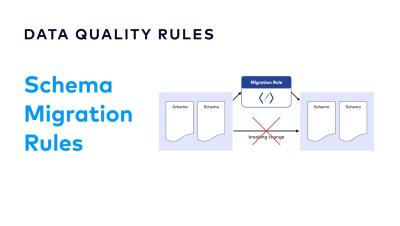Systems | Development | Analytics | API | Testing
Kafka
How to Evolve your Schemas with Migration Rules | Data Quality Rules
Unlock the secrets to complex schema evolution with Gilles Philippart! Discover how migration rules can transform what is usually a daunting task into a painless process with no breaking changes.
What is the Event Sourcing Pattern? | Designing Event-Driven Microservices
Event Sourcing is a pattern of storing an object's state as a series of events. Each time the object is updated a new event is written to an append-only log. When the object is loaded from the database, the events are replayed in order, reapplying the necessary changes. The benefit of this approach is that it stores a full history of the object. This can be valuable for debugging, auditing, building new models, and a variety of other situations. It is also a technique that can be used to solve the dual-write problem when working with event-driven architectures.
Real-time Data Warehousing With Streaming Pipelines
See how to build a streaming data pipeline to a cloud data warehouse for real-time analytics. Leverage Confluent Data Streaming Platform to.
#9 Kafka Live Stream | Managing Consumer Offsets
How to manage consumer offsets in #apachekafka.
What is the Transactional Outbox Pattern? | Designing Event-Driven Microservices
The transactional outbox pattern leverages database transactions to update a microservice's state and an outbox table. Events in the outbox will be sent to an external messaging platform such as Apache Kafka. This technique is used to overcome the dual-write problem which occurs when you have to write data to two separate systems such as a database and Apache Kafka. The database transactions can be used to ensure atomic writes between the two tables. From there, a separate process can consume the outbox and update the external system as required.
How To Improve Data Quality with Domain Validation Rules | Data Quality Rules
Dive into streaming data quality with Gilles Philippart! Learn to keep bad data out with Confluent's Data Quality Rules.
#8 Kafka Live Stream | Understanding and managing Kafka schemas
As you scale up the number of teams and apps on #apachekafka , using schemas managed in a Schema Registry will save you endless problems. In this #Kafka Live Stream, learn the fundamentals of schemas for your applications and how you can best manage them.
What is the Dual Write Problem? | Designing Event-Driven Microservices
The dual write problem occurs when you try to write to two separate systems and need them to be atomic. If one write fails, and the other succeeds, you can end up with inconsistent state. This is an easy trap to fall into, and it can be difficult to avoid. We'll explore what causes the dual-write problem and explore both valid and invalid solutions to it.











